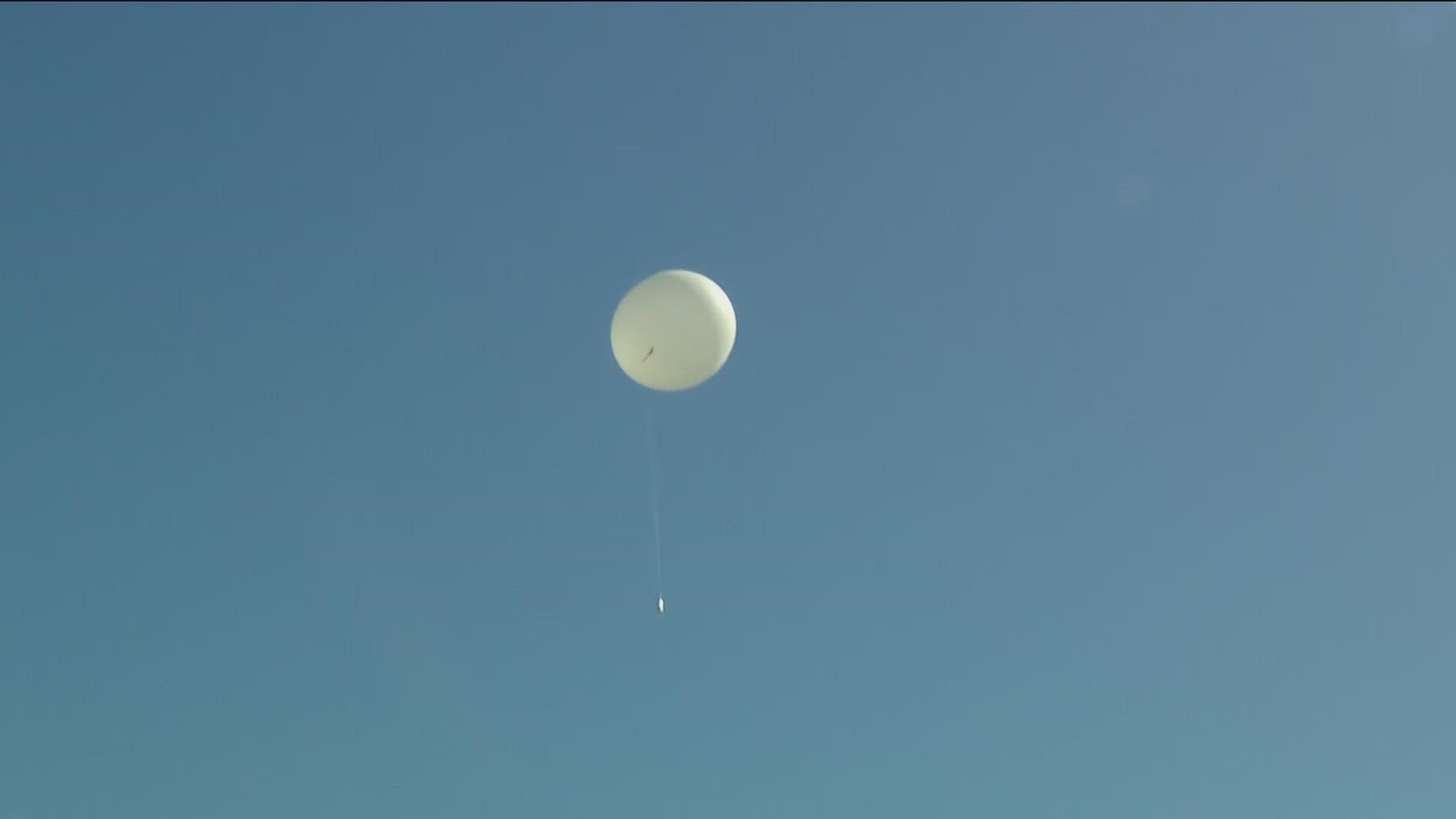SAN DIEGO — Scientists studying the marine clouds that shade and cool the earth launched a new climate science experiment at Scripps Pier Monday morning.
"One of the great things about the San Diego climate is how we have such a range of temperatures. And part of that is because the clouds help keep our atmosphere cool and give us pleasant temperatures year round," said Lynn Russell, a climate scientist with Scripps Institution of Oceanography at UC San Diego.
"As the climate warms, we’re worried some of the cloud patterns may change, and we may not have as many clouds in future as we do now," she added. "So we're really trying to understand how that climate is changing."
The study includes launching weather balloons from Scripps Pier. The first one was launched around 11:00 a.m. on Monday.
According to Russell, a white box attached to each balloon sends data back to machines on the pier and on Mount Soledad. The high tech equipment was put there by Eastern Pacific Cloud Aerosol Precipitation Experiment (EPCAPE) researchers and technicians
As the balloon rises into the air, it gives scientists information about the temperature, the pressure and the ozone, to give them a better understanding of the structure of the atmosphere. The data will also help them understand how pollution affects the atmosphere.
Once up in the air, Russell said the balloon usually lasts less than a day before it bursts.
During the winter months, two balloons will be launched per day. Once summer hits, the scientists will launch four balloons a day.
Scripps is working with federal Department of Energy officials on this experiment.
According to Scripps, it will provide an unprecedented amount of four-season data on the properties of coastal marine clouds, including their radiative effects and the role human-made particles play.
WATCH: City of Encinitas bans ‘lighter than air’ balloons in hopes of protecting the environment (May 2022)

